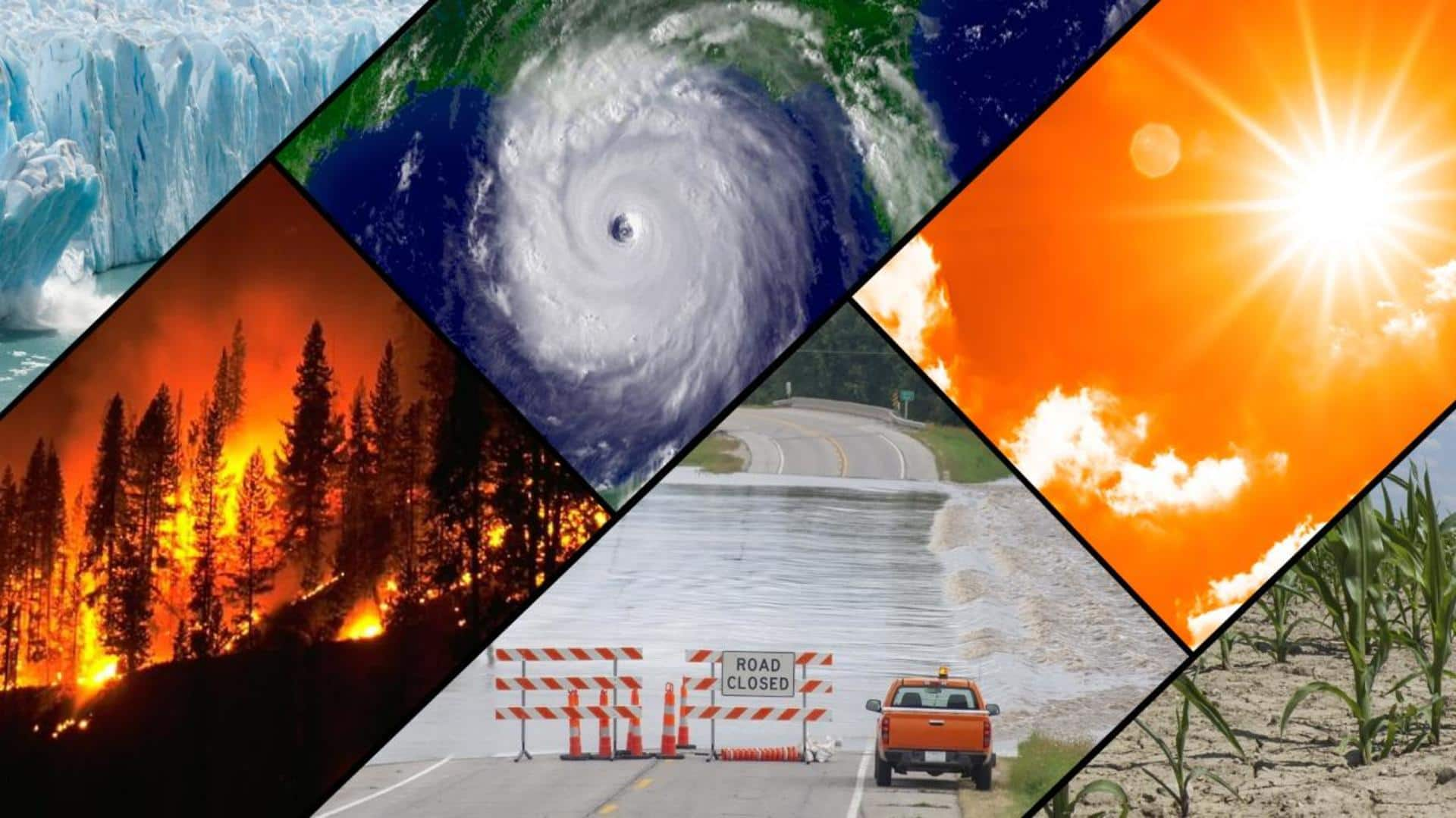
5 key takeaways from the UN Climate Change 2022 report
What's the story
Global temperatures were the highest in the last eight years, according to the World Meteorological Organization's (WMO) annual report for 2022.
WMO, an agency of the United Nations (UN), stated that sea level rise and ocean warming set record-high limits.
Not only that, record levels of planet-warming greenhouse gases caused more droughts, floods, and heatwaves across the world last year.
#1
Carbon dioxide, methane, and nitrous oxide hit record-high in 2021
The WMO report shows that average global temperatures have continued to rise. The eight warmest years recorded, since continual monitoring started in 1850, were from 2015-2022.
The report notes that this was in spite of three consecutive years of a "cooling La Nina climate pattern."
Three of the heat-trapping greenhouse gases, namely carbon dioxide, methane, and nitrous oxide, clocked record-high levels in 2021.
#2
Antarctic sea ice fell to its lowest extent on record
Glacier melting and sea level rise also reached record levels in 2022. What's worse is that it is expected to continue up to "thousands of years."
The report notes that "Antarctic sea ice fell to its lowest extent on record and the melting of some European glaciers was, literally, off the charts".
Further, ocean warming has been "particularly high in the past two decades."
Information
Ice loss in Greenland and Antarctica increased five-fold since 1990s
The latest IMBIE (Ice Sheet Mass Balance Intercomparison Exercise) report also shows the staggering loss of ice cover in Greenland and Antarctica. Ice loss increased five-fold since the 1990s and now accounts for a quarter of the global sea level rise, reveals the report.
#3
Continuous drought has led to food insecurity in East Africa
Five continuous years of drought in East Africa—along with other factors—has led to food insecurity for 20 million people across the region.
Severe rainfall during July and August 2022 in Pakistan caused 1,700 deaths, affecting about 33 million. By October 2022, roughly eight million people were internally displaced due to floods.
The total damage and economic losses were reported to be $30 billion.
#4
The onset of monsoon was earlier in India last year
Last year, monsoons arrived earlier in India and the season ended later than normal, shows the report.
The pre-monsoon period was unusually hot in India. The extreme heat impacted crop yields and sparked several forest fires, especially in Uttarakhand, per WMO.
Monsoons also caused severe flooding, particularly in the northeast in June 2022. More than 700 people reportedly died due to flooding and landslides.
Official words
Pre-monsoon period heatwaves caused a decline in crop yields
"Heatwaves in the 2022 pre-monsoon season in India and Pakistan caused a decline in crop yields. This, combined with the banning of wheat exports and restrictions on rice exports in India....has threatened the availability, access to, and stability of staple foods within international food markets and posed high risks to countries already affected by shortages of staple foods," said the report.
#5
China and Europe also experienced extreme heat waves
China also experienced intense and long spells of heatwave since national records began, starting from mid-June to the end of August 2022, leading to its hottest and second-driest summer on record.
Europe also saw extreme heat waves. Due to the exceptional heat in summer, there were 4,600 deaths in Spain, 2,800 in France, 4,500 in Germany, and 1,000 in Portugal, according to the report.